The world of spices is extremely diverse. What spices just do not add the cook of the whole world to their culinary masterpieces! A separate place in the seasoning list is occupied by Sichuan pepper. What is interesting about this spice and is it possible to replace it with more familiar spices?
Material Content:
What is Sichuan pepper
Sichuan pepper also has the name of Japanese (Chinese) pepper. The spice is represented by the dried contents of ash fruits, which burst during ripening, leaving boxes. The small kernels located inside them have a bitter aftertaste, so they are removed so as not to spoil the finished spice.
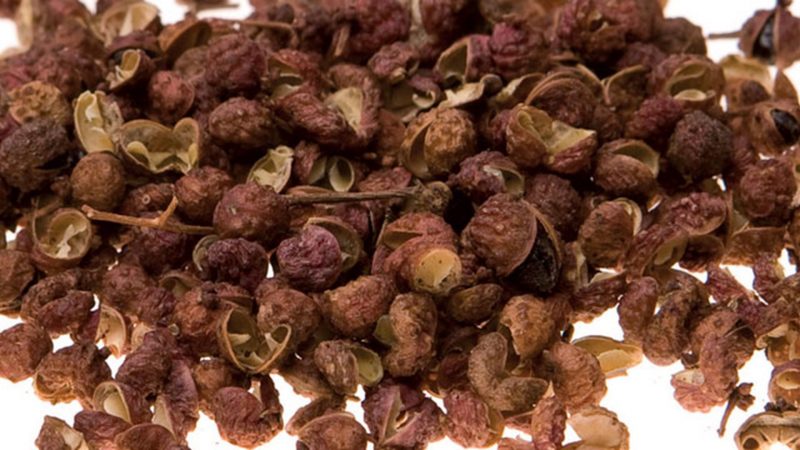
Boxes differ in various colors: from reddish brown to bright green or gray. Their inside is usually yellowish.
In other words, Sichuan pepper, in fact, is not pepper at all in the botanical sense.
Chemical composition and beneficial properties
In eastern and Asian countries, this kind of spice is popular not only as an original seasoning, but also as a storehouse of multiple nutrients.
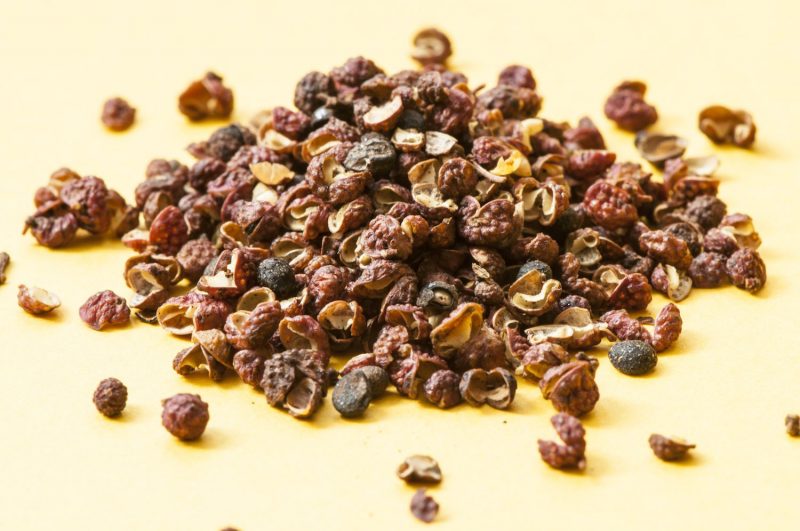
It consists of:
- vitamins A, E, B, PP, C.
- micro and macrocells, copper, phosphorus, potassium, zinc, etc.
- essential oil.
The Chinese have long used boxes of ash to relieve toothache by chewing them. In addition, Sichuan pepper helps to improve mood and overall well-being. This spice has a positive effect on the digestive system and helps lower blood pressure.
By the way.Japanese pepper is used to prepare pasta with a pronounced anesthetic effect.
After eating Sichuan spice, a minty taste and a slight numbness are felt on the tongue. This is due to the content of antioxidants in the composition of the spice.
Distinctive features of pepper
Sichuan pepper differs in many respects from its peers of the same name.
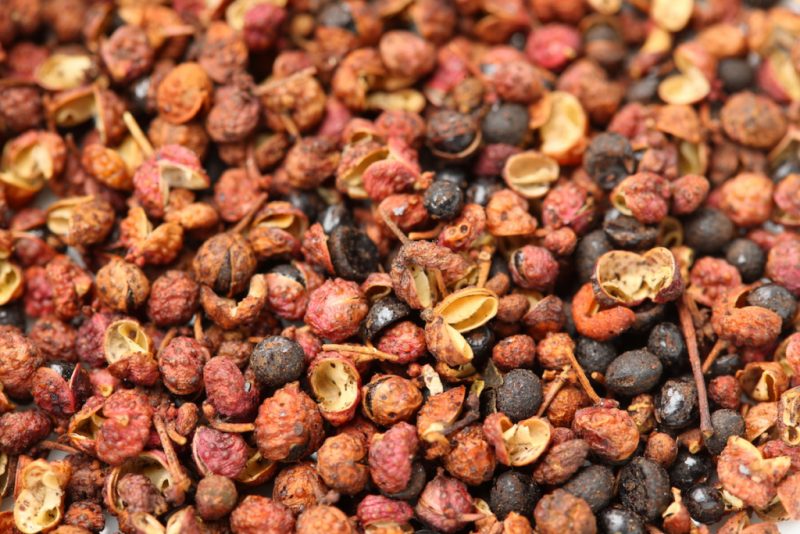
Features of this spice are as follows:
- The product has a pronounced lemon-woody aroma. At the same time, his sharpness is not burning at all, but rather spicy.
- Varieties of this plant have a rich aroma of camphor, nutmeg, anise.
By the way. Japanese pepper extract is used in the manufacture of perfumes, and yellow dye is obtained from plants' wood.
What is the secret of the original taste and aroma of seasoning
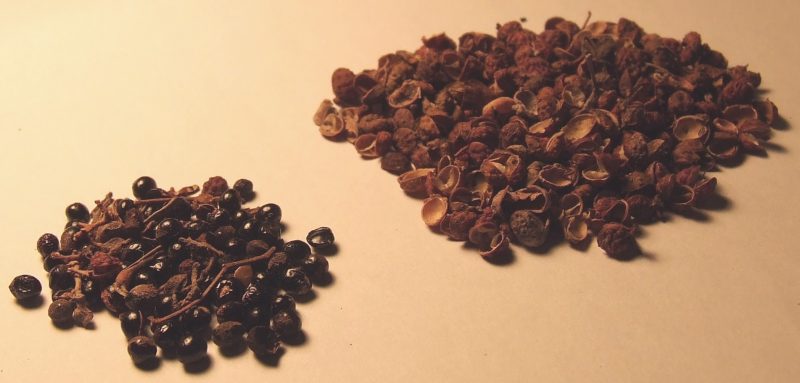
The secret of the unique taste of Sichuan pepper lies in the special conditions created in the process of growing it:
- Sowing of seeds is carried out in February. Before this, the grains are stored in the refrigerator for almost 3 months. Seed germination can take up to several months.
- When the seedlings get stronger they are relocated to the pots. Green Sichuan pepper is placed in a permanent place and is no longer transported.
- The soil for distillation of pepper should have a high degree of drainage. Regular and plentiful watering accelerates the growth of future spice.
- The plant can be tolerated in the sun, but partial shade is best for it.
The use of Sichuan pepper in cooking
The use of seasoning in creating culinary masterpieces is becoming increasingly popular among gourmets in all countries of the world.

Pepper goes well with the following products:
- meat (chicken, duck, pork);
- fish;
- Dessert.
Sichuan pepper is used as a base seasoning for various dishes or as a component of mixtures of 5, 7 or even 13 peppers. Especially interesting is the combination of Japanese and Chilean peppers.
In a daily diet, Sichuan pepper can be used even with the most commonplace dishes. For example, you can cook smelt for a snack. To prepare this piquant dish you will need 0.5 kg of gutted fish.
- Carcasses must be washed, drain the water.
- Squeeze the juice from one large orange and flavor it with fish.
- By adding 1 tbsp. l soy sauce, set aside the marinate for half an hour.
- At this time, you can prepare a breading mixture. To do this, mix 1 tsp. coriander, pepper and Sichuan spice.
- Grind the mixture to a powder state. Add 5 tbsp. l flour, a little salt and mix everything.
- The smelt is breaded and fried in vegetable oil until a crust forms.
How to replace in cooking
How to replace Sichuan pepper if it is not possible to get an exotic spice? Alternative spices (or spice mixtures) are suitable for this purpose.
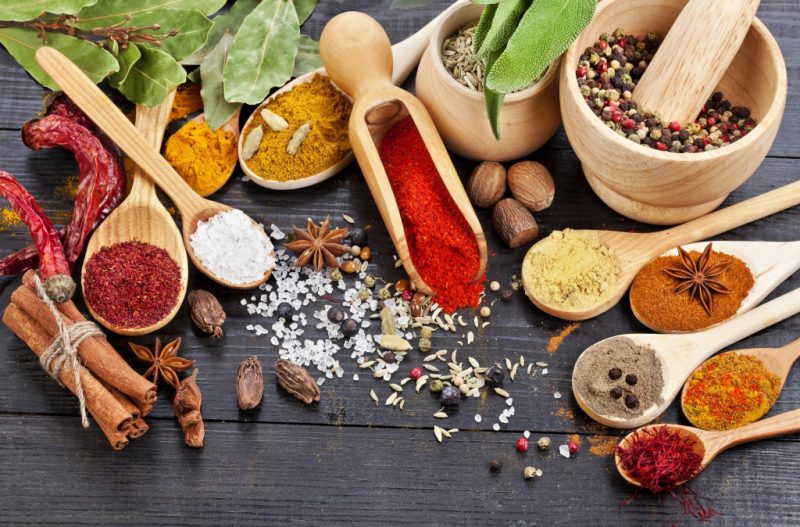
- Black pepper + cloves. This combination is considered the closest in taste to Japanese pepper. The specified mixture will require almost half less than Sichuan pepper. In this case, cloves should be more than pepper 2 times.
- Coriander + black pepper. Mix the components in equal proportions. The volume of the mixture should be identical to the amount of Chinese pepper.
- Black + allspice. Ground ingredients mix in equal amounts. The mixture is used in volumes less than the Sichuan equivalent by 2 times.
- Ginger. The root is rubbed on a fine grater. This ingredient should be taken 10 times more in comparison with exotic peppers from Japan.
- White pepper. The flavor of this seasoning is similar to the smell of Sichuan pepper. In this case, the tastes of ready-made dishes with such spices, of course, will differ. White pepper is laid 3 times less than Sichuan.
- Citrus fruits + any pepper. The most relevant will be the lemon peel, which has a sour taste. To get the equivalent of 1 tsp. Sichuan pepper you need to mix the zest of half a lemon with 0.5 tsp. any pepper.
- Mint.To replace Sichuan pepper, peppermint must be taken in equal proportions. To get used to the unusual taste of mint in dishes, it is recommended to take it very little for the first time.
- Anise + white pepper. Like pepper from China, anise gives the finished dish a special aroma. This smell, however, is quite specific, so use anise with caution. 1 star anise and 0.5 tsp. white pepper replace 1 tbsp. l Japanese spices.
Sichuan pepper is an exotic spice that gives dishes a unique flavor and an original, incomparable taste. It should be noted that for most people, the taste of this pepper may seem unusual, even strange. Especially surprising for beginners is the numbness of the tongue that occurs after consuming spices. Nevertheless, having got acquainted with pepper closer, one can note truly unique tastes of the dish, flavored with this unusual spice.












